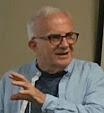However, this band-aid stopped people. “What happened to
you?” they asked. Sometimes I responded, “I bumped my head.” Sometimes I said,
“My mother died.”
I wanted the world to know of my loss but I didn’t always
want to talk about it. The bump and bandaid were my psyche’s way of declaring my need for
special consideration.
Grieving is neither well understood nor accepted in our
culture. We seek to tame its wildness by describing a predictable “process”
with inevitable “stages”. We are told to “work through” our grief as we “let
go” of our loved ones. There is, it seems, a “right way” to grieve.
I long for the days when grieving was more mysterious and
we who grieve were given time and space to allow the inevitable transformations to happen within us. To burn a candle, to gather after a month or forty days,
to ritually observe the loosening of the bonds — these make sense to me. They
are public ways of honoring private grief without dictating the form or content
one’s healing should take.
Black armbands or head coverings, crepe hanging over doors —
these were the bumps and band-aids of past generations. They discreetly
informed the public that here were individuals in a special condition of
vulnerability. Here were people adjusting to a world that had been made unacceptable
by their loss. Here were individuals, they signaled, who bore within them a
need for special care.
Alas! Crepe no longer hangs over our doors. Armbands and head coverings no longer protect us. We are left to heal as best we can in the spaces we create. Bumps and band-aids will have to do.












